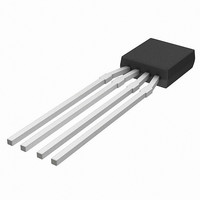KMZ10C,112 NXP Semiconductors, KMZ10C,112 Datasheet - Page 41

KMZ10C,112
Manufacturer Part Number
KMZ10C,112
Description
IC MAGNETIC FIELD SENSOR SOT195
Manufacturer
NXP Semiconductors
Type
Special Purposer
Specifications of KMZ10C,112
Sensing Range
2mV/V
Voltage - Supply
5 V ~ 10 V
Output Type
Analog
Operating Temperature
-40°C ~ 150°C
Package / Case
SOT-195
Mounting Style
SMD/SMT
Maximum Operating Temperature
+ 150 C
Minimum Operating Temperature
- 40 C
Supply Voltage (min)
5 V
Supply Voltage (max)
10 V
Operating Temperature (min)
-40C
Operating Supply Voltage (typ)
5V
Lead Free Status / RoHS Status
Lead free / RoHS Compliant
Current - Supply
-
Current - Output (max)
-
Features
-
Lead Free Status / Rohs Status
Lead free / RoHS Compliant
Other names
933698480112
KMZ10C T/R
KMZ10C T/R
KMZ10C T/R
KMZ10C T/R
Philips Semiconductors
Table 8 Summary of advantages and disadvantages of typical measurement set-ups
Measurement examples using Philips’ sensors
For measurement, Philips’ KMZ10A/B/C and KMZ51
sensor types can be used. The KMZ10A/B/C have to be
stabilized with auxiliary magnets, for example as in the
KM110B/2. KMZ51 sensors contain internal conductors
(‘coils’) to compensate for offset and temperature drift and
do not need an auxiliary magnet, allowing for simple
circuitry with reduced need for adjustments. As these
sensors do not measure fields above about 230 A/m
(approx. ten times the earth’s magnetic field), they must be
used in a measurement set-up that reduces the effects of
interference fields, as described above.
The following examples demonstrate Philips’
magnetoresistive sensors being used in real-life situations.
AC
SENSORS
Two KM110B/2 sensors, placed as outlined above, are
in-phase for current measurement and antiphase for
external field compensation, eliminating the effects from
stray fields and improving sensitivity (see figs 47 and 48).
1998 Jun 12
CURRENT MEASUREMENT WITH TWO MAGNETIC
Magnetic field sensors
no galvanic connection
no breaking of the
conductor
small physical
dimensions
reduced sensitivity to
sensor-conductor
distance
reduced interference
effects from
homogeneous fields
CURRENT MEASUREMENT USING DUAL
PROS
FIELD SENSORS
interference effects from
inhomogeneous fields
errors generated from
large external fields
KM110B/2
CONS
41
CURRENT MEASUREMENT WITH ONE MAGNETIC
no galvanic connection
no breaking of the
conductor
small physical
dimensions
PROS
FIELD SENSOR
effects of interference
from external fields
sensitive to the
sensor-conductor
distance
CONS
General














